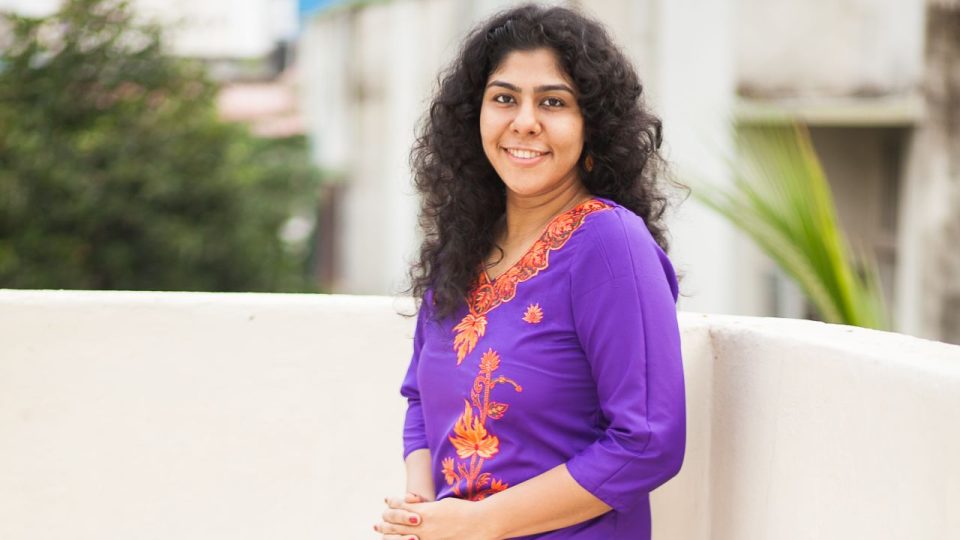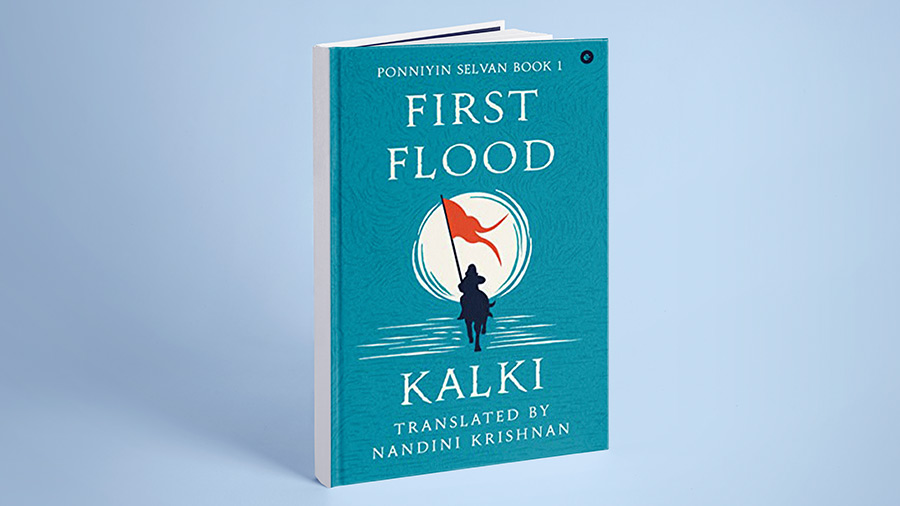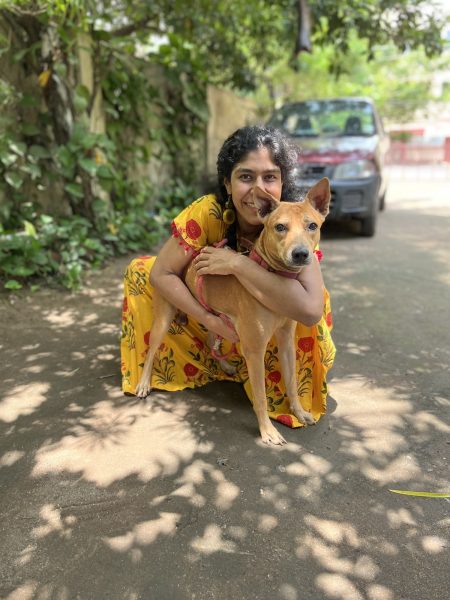
‘First Flood’: Nandini Krishnan on translating Kalki’s Tamil magnum opus Ponniyin Selvan

In the flood of time, the tale of Kalki Krishnamurthy’s magnum opus Ponniyin Selvan flows ceaselessly, beckoning readers to embark on a captivating voyage, an enchanting journey through time and history. Author and translator Nandini Krishnan has undertaken the formidable task of translating the literary masterpiece, a classic of Tamil literature, into English in order to introduce it to a new generation of readers.
The first of Krishnan’s 10-part unabridged translation of Ponniyin Selvan, titled First Flood (Eka), released recently. She breathes new life into Krishnamurthy’s epic, transcending barriers of language and culture with her translation. Her understanding of the source material and her ability to intricately balance faithfulness to the original with a contemporary sensibility shine through in her translation.
As we traverse its pages, we become entangled in a tale laced with adventure, history, travelogue, and myth-making — woven together in a tapestry of unparalleled beauty. We get immersed in the story of Vallavarayan Vandiyadevan, a scion of the Vaanar clan, who sets forth across the sprawling Chozha land, entrusted with a secret message from Crown Prince Aditya Karikalan — his path fraught with peril and conspiracy.
Krishnamurthy, whose activism during India’s struggle for independence led him to launch the Tamil magazine Kalki — where Ponniyin Selvan was serialised — wrote several novels, including Parthiban Kanavu and Sivakamiyin Sabadam, as well as political essays, film reviews, dance and music critiques and scholarly work. In Ponniyin Selvan, he invented a distinct style in which slang meets erudition, and wordplay is entwined with euphoric prose.
Also read: Why Mani Ratnam’s Ponniyin Selvan will be praised as a masterpiece of all time
In her evocative translation — rich with alliteration, descriptive language, and attention to cultural nuances — the grandeur of the Chozha land unfurls before our eyes. The choice of words and the turns of phrase add depth to the story in another language, lending a lyrical flow to the text. In an interview to The Federal, Krishnan talks about replicating Kalki’s style and tone, why we must consume literature of a different era as it was written, her forthcoming novels and more. Excerpts from the interview:
How and when did you arrive at Kalki’s world, especially a work as staggering in its scope and scale as Ponniyin Selvan? Did the film adaptation by Mani Ratnam have anything to do with it?
Kalki is a household name in Tamil Nadu. All his books have been in the family library for as long as I can remember. I was, in fact, named after a character from the book, so I was keen to read it even before I could read Tamil.
When I did eventually read it, about twelve years ago, I didn’t think of it as staggering. Yes, it seems daunting because of the number of pages, but each chapter is between seven hundred and two thousand words, and it is a masterclass in storytelling. Like Charles Dickens, Kalki Krishnamurthy was serialising his work, and he had to make sure the reader was hooked enough at the end of each chapter to buy the next issue of his magazine. One is hooked, you know.
All my life, I’ve been hearing that a film is being made on Ponniyin Selvan. MGR was supposed to make one decades ago, and then Kamal Haasan wanted to make one, and I think everyone is a bit stunned that a two-part film did eventually get made. The film adaptation is why the rest of India knows of the book, but I had begun translating it five years ago. I was planning to release it chapter by chapter on my website, as Kalki Krishnamurthy did in his magazine.

Although my reading and translating the work didn’t have much to do with the film, I think the renewed and widespread interest in Ponniyin Selvan among non-Tamil readers may be the reason for its publication.
For First Flood, a poetic translation, how did you work with Kalki’s style and tone to ensure that the translation remained faithful to the original work while still being readable and engaging to modern readers?
Thank you so much for calling it a ‘poetic translation’. That is exactly the adjective I hoped to hear. Kalki has a certain sense of irony and even flippancy to which I can relate, so it wasn’t hard for me to replicate his style and tone. He himself ensures the work is engaging to modern readers. There is a fair bit of slang, which one doesn’t typically expect in a work of historical fiction. For instance, Vandiyadevan often uses the phrase ‘oru kai paarthudalaam’. It’s awfully tough to think of an equivalent in English, and I have usually gone with ‘show him his place’ or ‘deal with him’ or ‘put paid to him’. So, if at all, I might have reduced the slang in translation, and made it more high-brow than it was.
Ponniyin Selvan, written in five parts, runs into 2400 pages. It is also steeped in Tamil history and culture, including references to Chola kings, Hindu mythology, and classical Tamil literature. Was it important for you to keep the translation unabridged in order to capture its sweep?
Absolutely. In fact, I had to add explanatory notes to contextualise much of what Kalki took for granted that the reader would understand, because he was writing for an audience that was already familiar with the history of the region as well as Tamil culture and literature. There are certain references which would make no sense to someone who can access the book only in translation.
Also read: Ponniyin Selvan 2 review: Mani Ratnam tells a love ballad with elan
How did you approach the translation of the historical and cultural contexts in Ponniyin Selvan? Can you give some examples of the challenges you faced in this regard? Can you share a particularly tough passage or phrase in Book 1?
I had to be extremely careful with this aspect, because Kalki himself sometimes got mixed up with dates or time periods, and a couple of times even with names. The concept of editing is non-existent in vernacular publishing. So these mistakes can be seen in practically every Tamil edition. I had to do a fair bit of reading on my own to figure out which of Kalki’s varying versions was correct.
One of the big challenges was to translate the Sangam era poems. Kalki quotes from them, but does not simplify them for the reader. I had to make them understandable, but also render them in meter, or at least in poetry. The other problem is replicating the rhyme scheme.
But even Kalki’s writing, with its wordplay, alliterative effects and other aural curveballs, poses a challenge. One phrase that comes to mind is ‘avan gati adhogati dhaan’—‘adhogati’ is a Hindi word that had gained currency in Tamil Nadu at the time Kalki was writing, and he uses this phrase across volumes and across books. ‘Gati’ means ‘state’, in the sense ‘what becomes of someone’. It’s tough to capture the wordplay, and an equivalent or literal translation would be cringe-inducing.
As a translator, how do you navigate the tension between staying close to the original text and making it accessible to a broader audience? Do you feel the need to strike a balance between the two? What is the key to that balance?
Yes, the balance is a tricky one to strike. One doesn’t want to interrupt the flow of the text or the story, but one also cannot have the reader feeling lost or losing interest because he or she doesn’t get a reference.
I usually add an explanatory sentence where needed, enclosed by em-dashes. When a longer explanation is needed, I add it in the ‘Notes’ section.
Perhaps the key is to remember that referring to the notes should be optional and not forced. I strive to make the meaning clear on the page to the extent possible.
To what extent did your cultural background influence your interpretation of Ponniyin Selvan? Is it easier to translate works that are set in the milieu a translator is familiar with?
The fact is, I’m far more comfortable speaking English than Tamil. There’s a fair chance I read French faster than I do Tamil. So, I don’t really relate too much to Tamil culture, except for the fact that I have spent a chunk of my life in this region. Then again, the place, its people, and its culture are so different from the milieu of Chozha Naadu of a millennium ago that I can’t really say it is familiar.
I translate from three other languages — Urdu, Spanish, and French — whose literatures are set in a milieu that is not familiar to me. I don’t think it makes much difference in terms of ease, particularly with historical fiction. The challenges are often the same — finding an equivalent for an idiom or sentiment that does not exist in English. In that sense, it is easiest to work with French and Spanish while translating into English because they have common roots.
Could you describe your journey in understanding and interpreting the essence of the characters, especially Vandiyadevan, a brave and impetuous young man who is sent on a mission by his friend and prince, Aditya Karikalan, to deliver a message to the Emperor Sundara Chola and the Princess Kundavai. What do you think are the key characteristics of Vandiyadevan that make him such a beloved and memorable character in the novel?
He is just so witty! And impulsive. He can laugh at himself, and he’s not shy of being something of a drama queen. There are times when you’re not sure whether he’s joking or serious. There are aspects to his character that make him so vulnerable that one wants to get inside the story and comfort him. Yet, he has all the morals and principles of a fearless war hero.
My journey in understanding and interpreting the characters…hmm, I let Kalki carry me along, and I got to know the characters as they unfolded in his story. Kalki does full justice to them — practically every character with a speaking role, and even some without, is crafted with his or her own complexities, ambitions, fears, hopes, and idiosyncrasies. Getting to know them is truly a delight.
Do you think there are ethical considerations that come with translating literature, particularly in cases where the original work may contain controversial or sensitive themes? How should a translator navigate that?
That is a great question, particularly in these times when the likes of Enid Blyton and Roald Dahl are being sanitised-slash-censored for ‘sensitive’ readers. At this rate, Adolf Hitler will end up coming across as a fairly genial chap.
I think it is important to remember the temporal and social context in which something was said or written. Kalki was writing in the 1950s, and his characters were speaking a thousand years ago, but the author and I will be judged by the standards of 2023.
I sometimes wonder how to translate a sentence that would literally go, ‘He felt around like a blind man’, which might be considered pejorative in these times. Words like ‘dumb’ and ‘retard’ have slipped out of most people’s vocabulary now. Some of the things Kalki says about women, on behalf of his characters, might come across as anachronistic.
However, I think it is our perspective that is anachronistic. We must consume literature of a different era as it was written. It tells us a lot about the times as well as about the author.
I hesitate to type words that might be offensive to the modern reader, but in the end, go with the original to the extent possible. Wherever it might be particularly shocking, I add notes.
What advice would you give to aspiring translators who are just starting in the field, especially those who are interested in translating literature from languages and cultures that are unfamiliar to them?
Unfamiliarity can neither be an excuse nor an option. One has to familiarise oneself with the source language and culture in order to be able to carry the connotations into the target language. My advice would be to own the story. Don’t think of it as the work of someone else. The translation is your baby. You alone are responsible for how good or bad it sounds.
As with writers, translators too should read extensively. See how Maureen Freely deals with Orhan Pamuk’s work. See how Vikram Seth translates from Chinese. Do we ever sigh about how much better the original Japanese of Haruki Murakami’s writing or the original Russian of Dostoevsky’s must be? No, right? So, your job is to make sure you’re as good as those translators.

You also translated Perumal Murugan, who was on this year’s International Booker longlist. Kalki and Murugan are two writers vastly different in terms of genre, themes, and writing style. Do you see their work as the best representation of modern Tamil literature?
Oh, I don’t know if there is such a thing as ‘best representation of modern Tamil literature’. There is so much going on, and I can’t say I’m familiar with all the trends.
Also read: Ponniyin Selvan: The Federal captures the mystique of the novel and film
They are both people I have translated, as is Charu Nivedita. I think the one thing they all have in common, aside from me for a translator, is their deep understanding of human nature and human impulses. I enjoy reading their work, and feel I have a fair bit to learn from them, which is why I choose to translate them.
What are some of the key considerations that publishers should keep in mind when selecting works for translation and choosing a translator for the project?
I personally feel publishers should gauge literary merit rather than focus on labels. Nowadays, labels are seen as selling points. People are keen to publish women’s writing or Dalit writing, using the label almost as a hashtag. In my view, a writer ought to be able to transcend gender and caste and milieu. Sadly, this is often not the case. Sometimes it seems to me that writers themselves buy into or exploit their labels. Publishers outside India are aching for a particular picture of India — they want stories of oppression and transcendence. We are constantly looking at boxes rather than at stories.
As for choosing a translator, I think it is important to find one who is passionate about the original work. Also, his or her first language should be the target language, not the source language.
How do you see your role as a writer intersecting with or informing your role as a translator?
There are two particular ways — one, I feel I’m learning how to write even as I rewrite these wonderful storytellers’ works in English. I see how one can combine research and fiction, how one can sustain the readers’ interest over a period of years, how one can inhabit the skin of a character.
Second, I feel as a writer I’m more attuned to the craft that the original employs when I translate. I can relate to the sensitivities and vulnerabilities and insecurities and ego of the writer, and am therefore careful to treat their work with all the respect I can.
You have been working on two novels. Would you like to briefly talk about them? When do you hope to get them out into the world?
Oh, one is with the publisher and being edited at this very moment, so it should be out in the world fairly soon. I’ll leave it to the publisher to make the announcement. The other is still being written and rewritten in my head and on my laptop. It has been more than a decade since I wrote the play which became the trigger for the novel, and I have changed the plotline and the very structure of the novel. It has to do with grief, and the ways in which we deal with it. How do we honour a memory? And in keeping the departed alive, are we killing the living?

